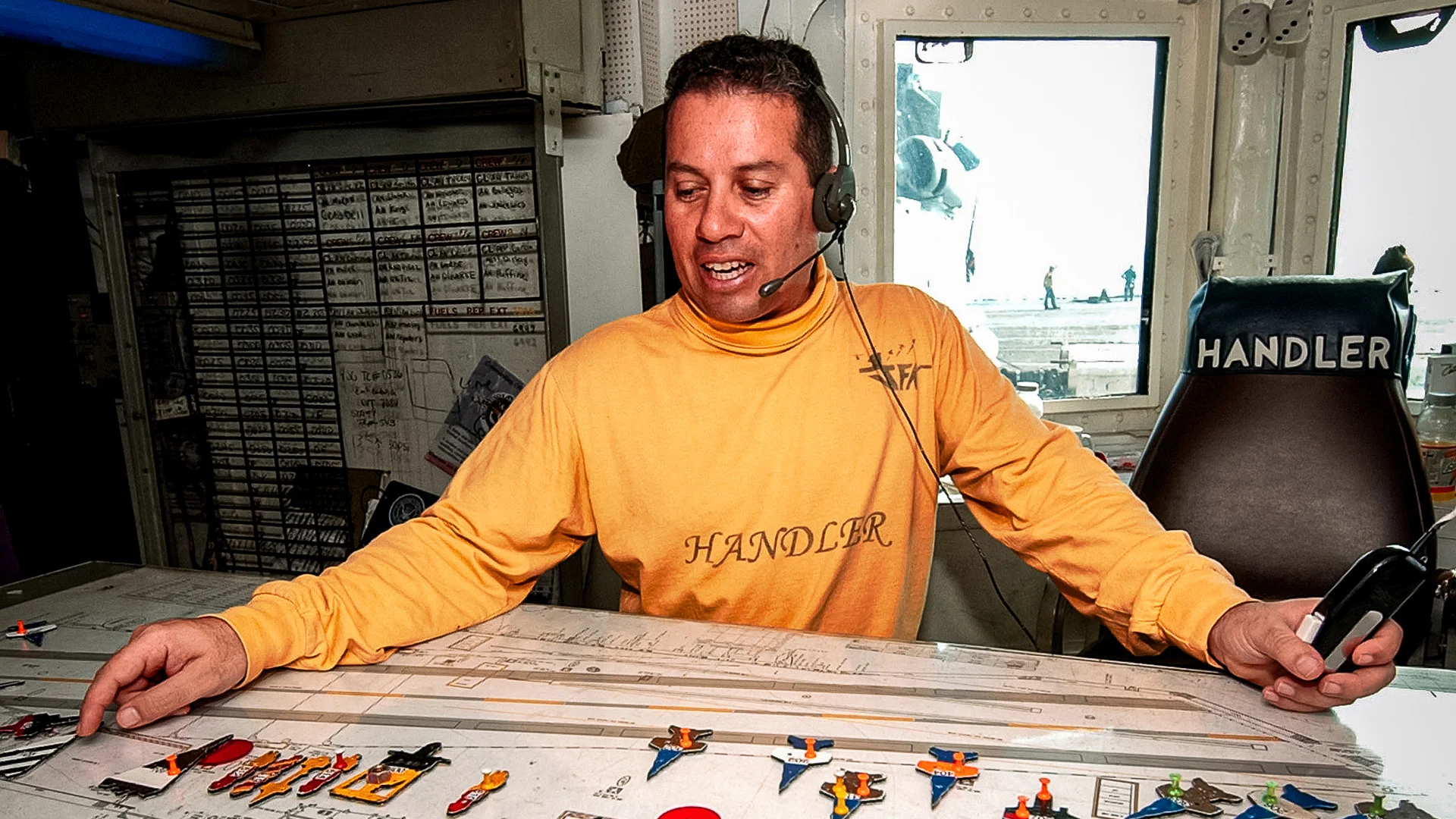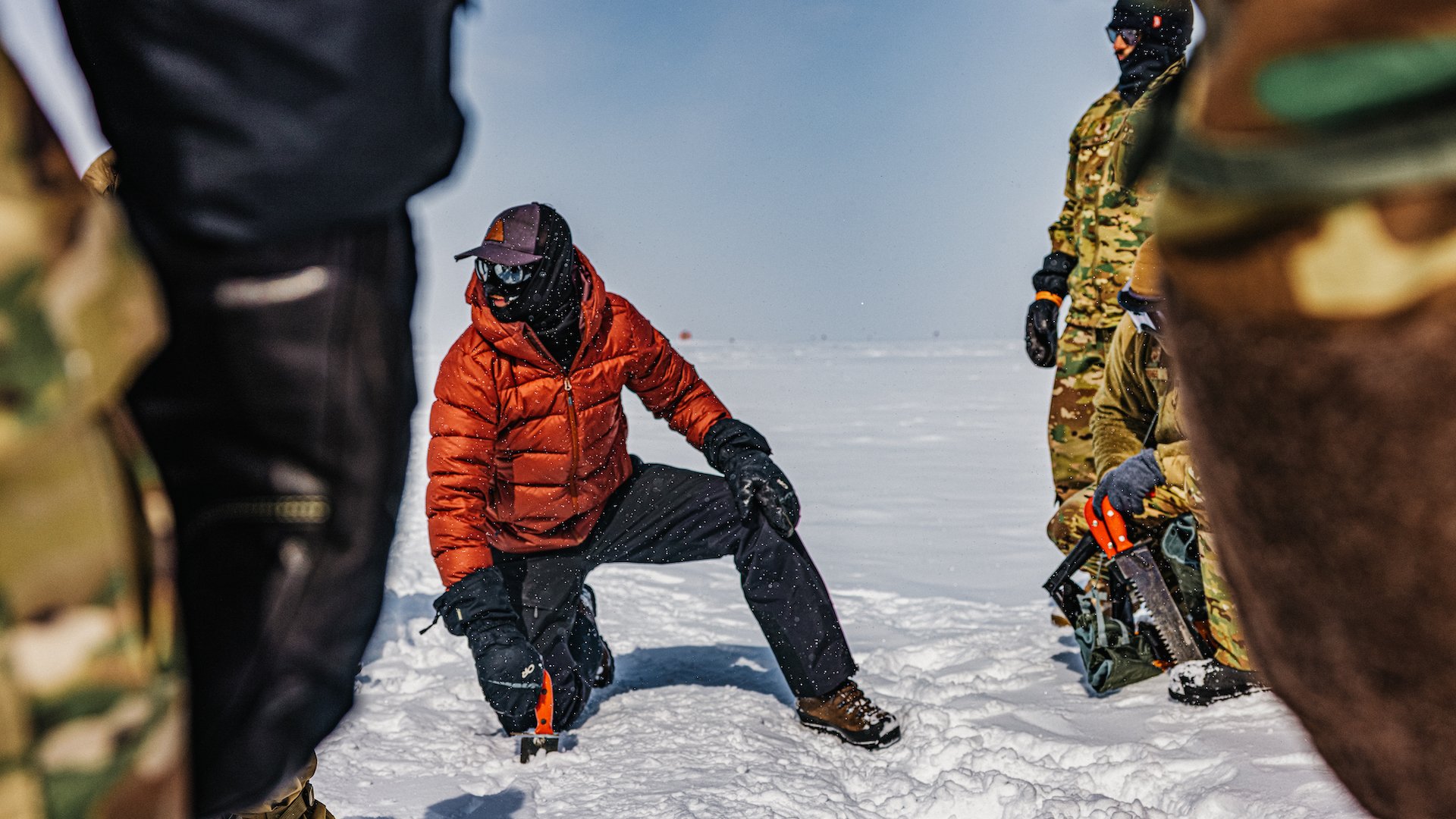
SERE specialist Staff Sgt. Samuel Ley teaches airmen how to cut snow blocks during Barren Land Arctic Survival Training on Greenland’s ice cap in May 2023. US Air National Guard photo by Master Sgt. Jamie Spaulding.
You’re on a plane that goes down in the Arctic. There is nothing but snow and ice as far as you can see. What do you do? And how do you survive?
The US Air Force has a course for that. In a 4-day, 3-night exercise, a mobile training team of Survival, Evasion, Resistance, and Escape instructors, known as SERE specialists, hit the wavetops (er, ice caps?). A repeat customer, the New York Air National Guard’s 109th Airlift Wing calls the training Barren Land Arctic Survival Training, or BLAST camp for short.
Because the 109th owns the only 10 ski-equipped LC-130 cargo planes in the world, its aircrews fly America’s missions to both poles. For that reason, the Guardsmen need to know how to survive if one of their skiplanes goes down over the Arctic or Antarctic, Earth’s coldest and emptiest regions.
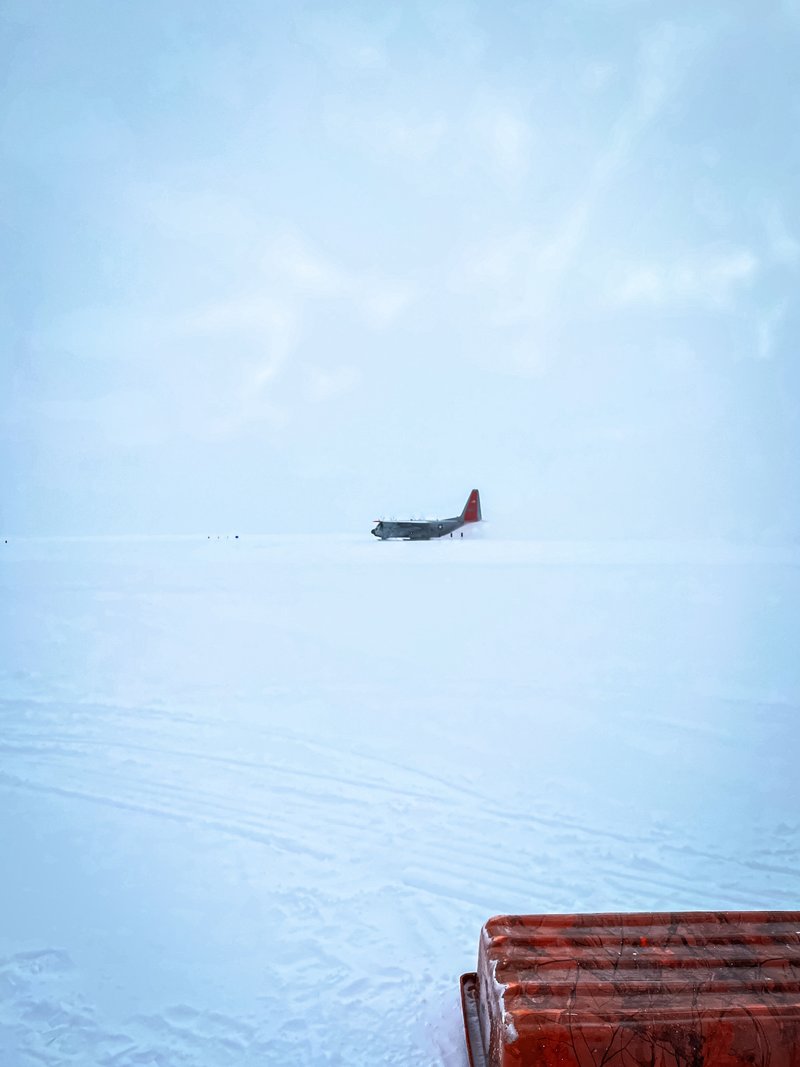
An LC-130 "Skibird" cargo plane lands on Greenland’s ice sheet at Raven Camp in May 2023. Photo by Jenna Biter/Coffee or Die.
In May, I embedded with a class of Guardsmen while they went through BLAST camp north of the Arctic Circle on Greenland’s 660,000-square-mile ice cap. This is what I learned.
Related: Embedded in Greenland: In the Arctic, Everything Goes Wrong
Arctic Survival Training School
Since the end of World War II, SERE specialists have been teaching other service members the skills they would need to survive the wilderness, evade capture by enemy forces, and if captured, resist interrogation and hopefully escape. Arctic survival training has been a priority since the SERE career field began.
“One of the beautiful things about the Arctic schoolhouse is we were established in 1947,” Staff Sgt. Brieton McMickell, an Arctic SERE specialist, tells me. “So, we’re one of the oldest Air Force schools.”
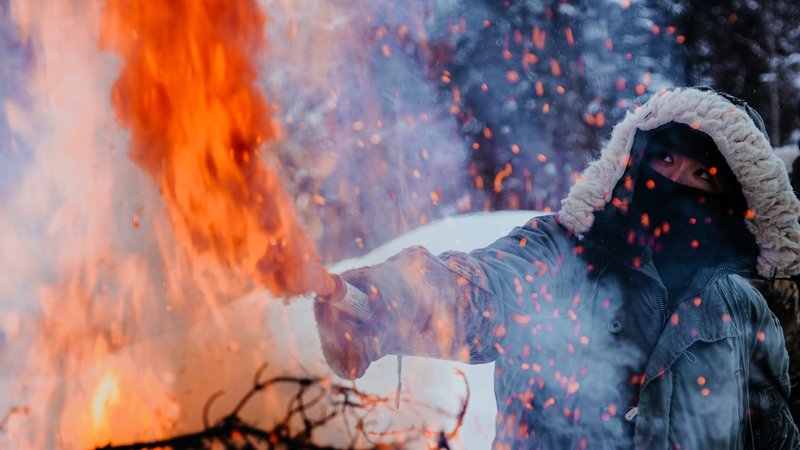
US Air Force Capt. Hyon Joo utilizes a signal fire to enhance the visibility of an Mk-13 smoke signal at Eielson Air Force Base, Alaska, during an Arctic survival training course on Feb. 22, 2013. US Air Force photo by Airman 1st Class Peter Reft.
The Air Force’s Arctic Survival Training School — formally Detachment 1, 66th Training Squadron — operates out of Eielson Air Force Base near Fairbanks, Alaska. For most customers, the cold-weather survivalists teach barren-land Arctic survival training outside of Utqiagvik (formerly Barrow), Alaska, the northernmost city in the United States. But the 109th Airlift Wing isn’t most customers.
Because the 109th flies the world’s only medium-to-heavy cargo skiplanes, they’re the only SERE customer that can realistically fly onto the northern ice cap for training. The BLAST site, located at Raven Camp, Greenland, sits roughly 7,000 feet above sea level and 150 miles from civilization in all directions. According to Maj. Preston Moon, commander of Detachment 1, 66th Training Squadron, SERE specialists assigned to the Arctic schoolhouse have taught the 109th’s Guardsmen survival skills on Greenland’s ice sheet since the early 2000s.
Related: NY’s 109th Airlift Wing: Home of the LC-130, World’s Largest Skiplane
BLAST Camp With SERE Specialists
Surviving the wilderness is all about prioritizing the basics: food, water, and shelter. Even though the basics are always the same, surviving the poles, home to Earth’s only ice sheets, is a two-of-a-kind experience. There aren’t animals or vegetation for food. Nor are there trees for shelter or fire. There is only an endless sheet of snow and ice. Maximize those resources — that is the main takeaway from BLAST camp. Make water and shelter from the white blanket underfoot.

Airmen cut snow blocks during Barren Land Arctic Survival Training, or BLAST, at Raven Camp, Greenland, in May 2023. US Air National Guard photo by Master Sgt. Jamie Spaulding.
Making Water. In Greenland, I assumed harvesting water would be as easy as eating snow. But it wasn’t so simple. In the Arctic, the body works overtime to keep warm. Consuming snow taxes the body even more and can lead to hypothermia. Depending on density, a person might have to eat 10 quarts of snow to extract only one quart of water.
The SERE specialists had a solution: Melt snow, or better yet ice, with body heat. Each BLAST student wore a three-pint bag around their neck. Ironically, the easiest way to make water is to start with some — hopefully, a canteen survives the “crash.” From private stashes, the airmen added a splash of water to their baggies, packed them with snow, and then snuggled those cold plastic bags against their chests. While they attended to other survival tasks, their bodies melted the snow, turning it into drinking water.
Making Shelter. Hopefully, the four-person Arctic tents aboard the LC-130s survive any crash or emergency landing. If so, shelter is easy. If not, the downed airmen must make alternative arrangements from the construction material beneath their feet. Simply put, they have to dig ditches and get down in there.
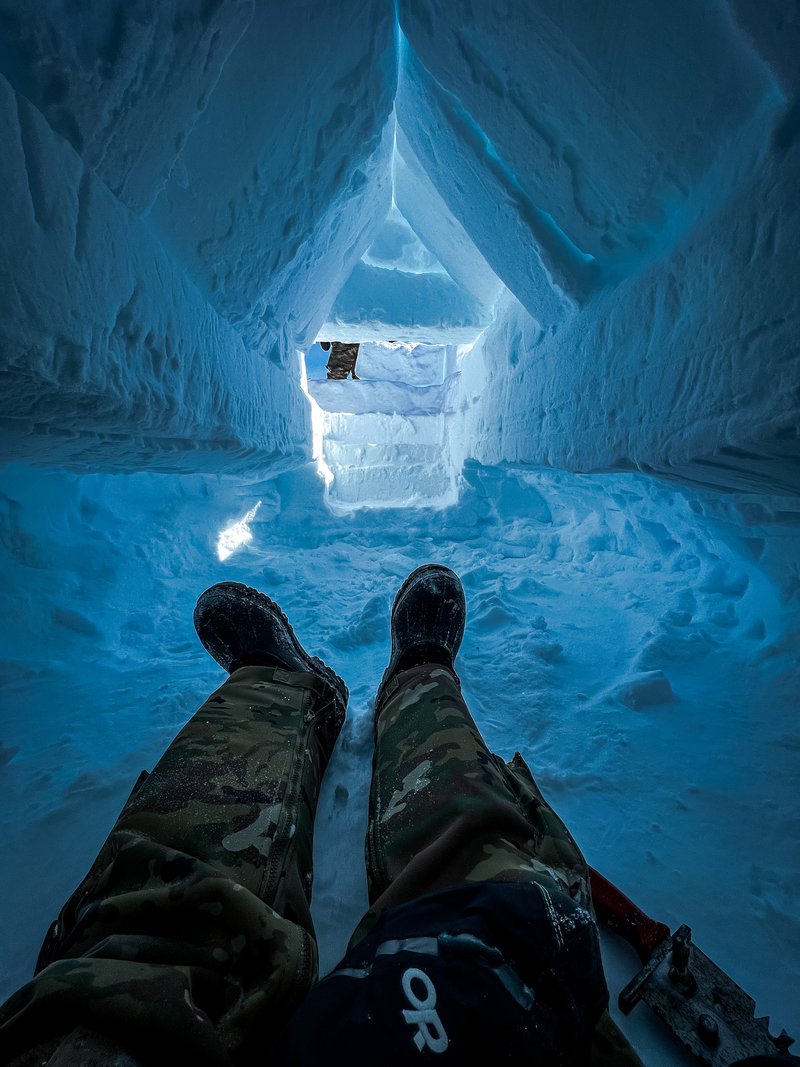
LC-130 pilot Maj. Nathan King lies in his fighter trench during BLAST camp on Greenland’s ice sheet in May 2023. Photo courtesy of Maj. Nathan King.
While I was in Greenland, the 109th’s Guardsmen built two-person shelters called fighter trenches. They located a hard spine of snow to use as a quarry. Then they spent hours cutting 50-to-60-pound rectangular blocks with their snow saws. The cut-out section became their sleeping trench. From the snow blocks, the airmen made peaked roofs to shield them from the elements.
Making water and shelter were only two skills that the 109th’s Guardsmen learned from SERE specialists at BLAST camp. Surviving the Arctic also involves clothing management, food, and signaling for help with flares. But perhaps most important, surviving the Arctic depends on experience. That is why the 109th Airlift Wing sends its aircrews to BLAST — to make their survival chops in a supervised setting.
“You’re so close to death in the Arctic environment,” Moon says. “You really can’t lean on any skill set other than experience.”
Read Next: Airmen in Kangerlussuaq, a Military Town Nobody Has Heard Of
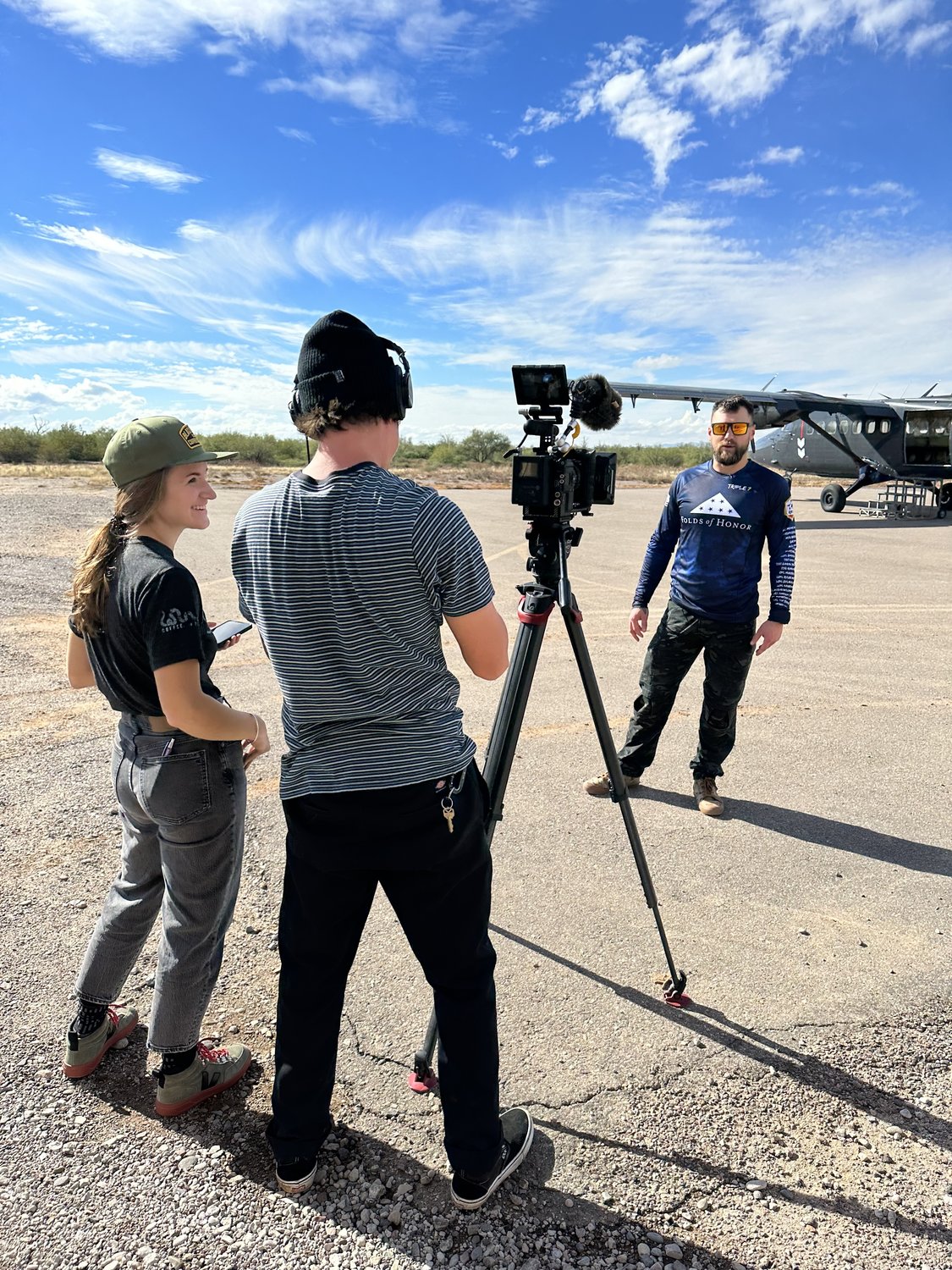
Jenna Biter is a staff writer at Coffee or Die Magazine. She has a master’s degree in national security and is a Russian language student. When she’s not writing, Jenna can be found reading classics, running, or learning new things, like the constellations in the night sky. Her husband is on active duty in the US military. Know a good story about national security or the military? Email Jenna.
BRCC partners with Team Room Design for an exclusive T-shirt release!
Thirty Seconds Out has partnered with BRCC for an exclusive shirt design invoking the God of Winter.
Lucas O'Hara of Grizzly Forge has teamed up with BRCC for a badass, exclusive Shirt Club T-shirt design featuring his most popular knife and tiomahawk.
Coffee or Die sits down with one of the graphic designers behind Black Rifle Coffee's signature look and vibe.
Biden will award the Medal of Honor to a Vietnam War Army helicopter pilot who risked his life to save a reconnaissance team from almost certain death.
Ever wonder how much Jack Mandaville would f*ck sh*t up if he went back in time? The American Revolution didn't even see him coming.
A nearly 200-year-old West Point time capsule that at first appeared to yield little more than dust contains hidden treasure, the US Military Academy said.
Since the 1920s, a low-tech tabletop replica of an aircraft carrier’s flight deck has been an essential tool in coordinating air operations.








